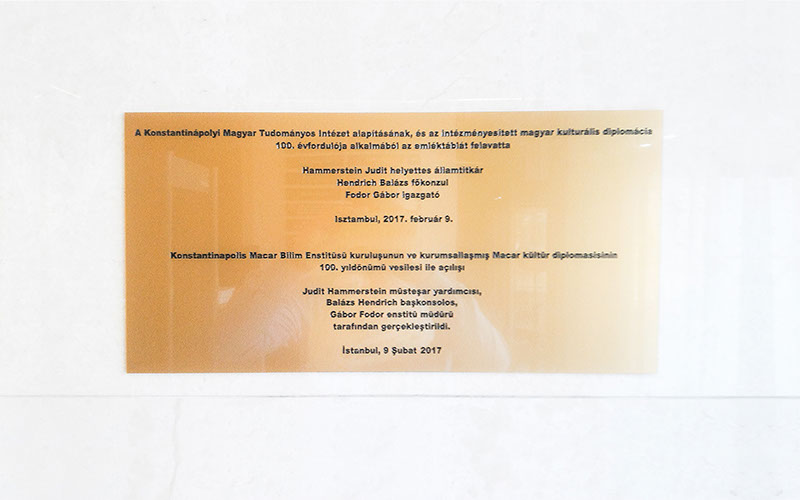The Ministry for Religion and Education founded the Hungarian Institute for Science in Constantinople in 1916 under the patronage of Prince Joseph in order to develop the relationship between the Austro-Hungarian and Ottoman Empires and between Hungarians and Turks. The building was situated in 23 Büyük Bayram Street in Pera, which was rebuilt in the 1930s. The director of the institute was Antal Hekler (1882-1940), art historian and archaeologist, who arrived in the capital of the Ottoman Empire in early 1917 together with his team: Zoltán Oroszlán, Péter Ralbovszky, Ferenc Lutter and Károly Kós. Except for the latter, all of them were researchers of the Classical and Byzantine period. The famous architect Károly Kós wrote the book Istanbul: History and Architecture of the City, which was published as No: 4-6 edition of the Hungarian Institute for Science in Constantinople in 1918, and also translated into Turkish. The activities of the institute closed after the loss of World War I: following the occupation of Istanbul by the Entente on 13th November 1918, British forces banned the operation of all Austro-Hungarian institutions. After the birth of the Republic of Turkey (1923), the institute of the Hungarian government, the Institute for Hungarology (Hungaroloji Enstitüsü) was opened in Ankara in 1936 instead of Istanbul. The Hungarian Cultural Centre in Istanbul was opened again in 2013.























